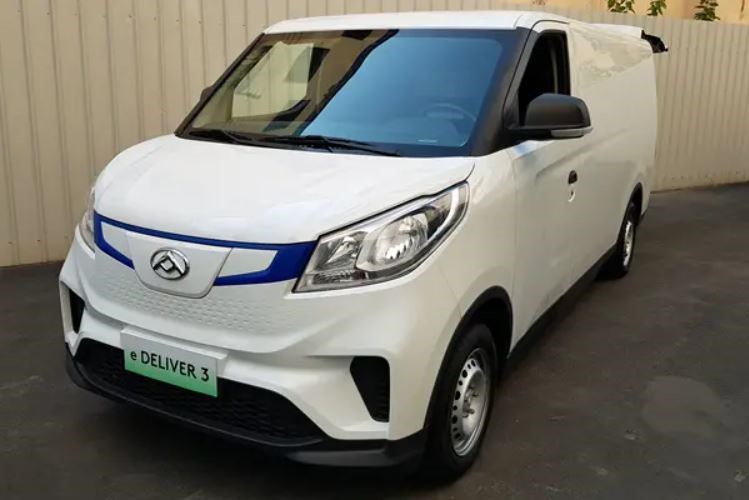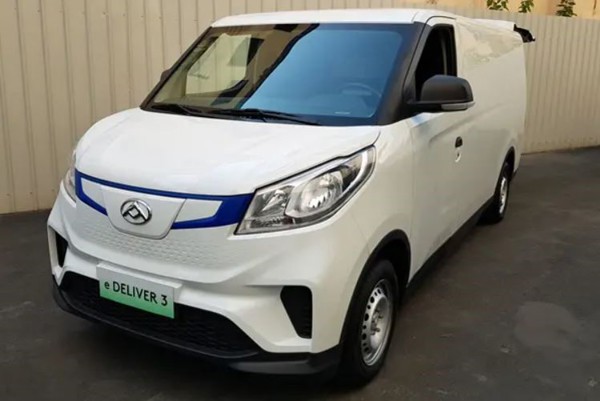Review
Maxus is set to launch its second van in spring in the form of the all-new ‘E Deliver 3’. Previously called the EV30, the E Deliver 3 will be one of the first electric-only vans to be sold in the UK, offering a range of up to 174 miles and a payload of up to 1,000kg. It’s not the only renaming taking place: Maxus itself changed names in the UK this month (April) from LDV.
Electric van sales are still in the embryonic stage. According to the Society of Motor Manufacturers and Traders, there were fewer than 1,000 registrations in 2018 (or less than 0.3% of total LCV registrations) but the increasing scrutiny on diesels is certainly changing the picture. It estimates that sales almost tripled last year to around 2,800 units.
Maxus’s current electric van, the eV80, had a great year of sales for both retail and fleet, with Milk & More placing an order for 159. Electric vehicles (EVs) are where Maxus and its Chinese parent SAIC are one step ahead of western manufacturers – after all, more than half of the world’s 2018 EV sales took place in China in 2018.
Unlike most electric vans, there will be no internal combustion engine (ICE) versions and so engineers have designed everything around electrification including the use of composite plastic and aluminium, rather than steel, for body panels which helps offset the weight of the battery for payload and increase the range.
The cab is quite surreal in that it gives a futuristic feel with its mix of contrasting black and blue plastics on the dashboard. There is an abundance of storage spaces and it is extremely spacious. UK models will have an electronic parking brake, rather than the traditional handbrake, which will free up room for an optional extra third seat.

The Chinese-spec model we were testing came with a 70kW/220Nm motor which means it slightly trails the eNV200 for performance, but UK models will have an uprated 85kW (115PS)/255Nm motor.
Given its compact size, the driving position is quite high which provides commanding all-round views. Even by EV standards, it’s effortless to drive with electrically-assisted power steering and the choice of two throttle modes and three degrees of energy recuperation.
The MacPherson strut and leaf-spring suspension configuration is more geared towards taking loads than comfort, and therefore the cab certainly bears the brunt of speedbumps and potholes. However, it is nicely balanced and handles well in the corners like most electric vans.
There will be two battery packs offered on the new van; a 35kWh and a 55kWh (this compares with 40kWh for the eNV200 and 33kWh for the Kangoo ZE), returning a range of 127 miles and 174 miles respectively on the NEDC cycle. Real-world and WLTP figures have yet to be published.
A rapid ‘DC’ charge to 85% takes just 45 minutes, while a Type 2 ‘AC’ charge could take as long as seven hours.
Maxus will offer both short and long-wheelbase variants which, at 5.0 and 6.3 cubic metres and 4.5m and 5.1m long respectively, straddle the traditional small and medium van segments. Of course, European homologated figures are yet to be finalised, but preliminary figures suggest there will be payloads of around 850kg (SWB) and 1,000kg (LWB), with Maxus lifting the GVW for vans with larger batteries to compensate for payload loss.
Official prices were due be announced in Q1, but bosses hinted the E Deliver 3 will start at around £24,000 plus VAT for the short wheelbase, 35kWh model when the Government’s PiVG has been taken into consideration, which is only a marginal increase on the eNV200.
The first UK deliveries will take place in spring and will be backed by Maxus’s excellent five-year, 125,000-mile warranty (eight-year warranty on the battery).





 Diesel
Diesel
 Petrol
Petrol












